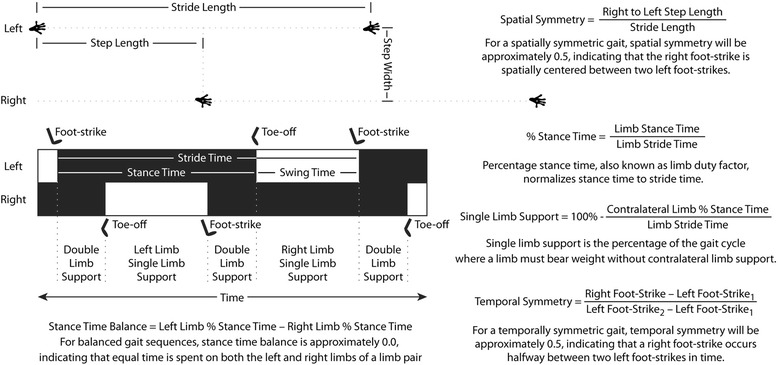Fig. 1.

Spatiotemporal characteristics of gait sequence of a rat. Hind limb footprint pattern and temporal gait sequence of a rat is shown. The forelimb footprints and temporal gait sequence have been omitted for clarity. Common spatial characteristics of the rat include stride length, step width, and step length; however, because stride length and step length are strongly associated, spatial symmetry can be used to describe the placement of the right footprint relative to two left footprints. The temporal characteristics of a single limb include stride time, stance time, and swing time. Stance time is typically normalized to stride time, as percentage stance time (also known as duty factor) follows a more linear relationship to an animal’s walking velocity. Similarly, the single-limb support phase for a given limb is frequently assessed as relative to the gait cycle. The synchronicity of the gait cycle can be evaluated through stance time balance and temporal symmetry. The gait cycle is balanced when an animal spends equal time on its left or right limb, represented by a stance time balance of 0. A gait cycle is temporally symmetric when the right foot strike occurs halfway in time between two left foot strikes, represented by a temporal symmetry of 0.5
